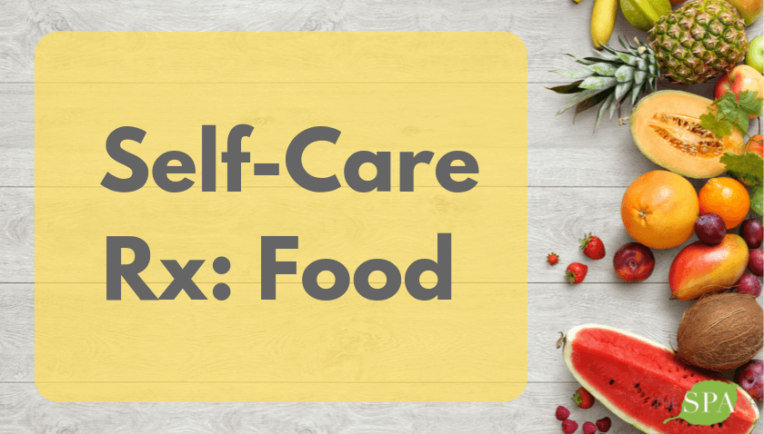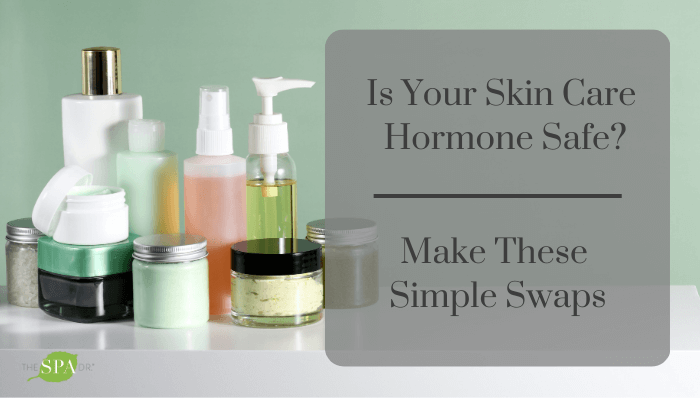Self-care is about nurturing and nourishing your body inside and out to help you look and feel your best. As I mentioned in last week’s Self-Care Rx about stress management, true health care starts with excellent self-care.
Nourishment for your skin within starts from within, with the foods you eat. That’s why this week’s self-care prescription is about fueling your body with the right foods.
There are many questions and mixed information about what, how much, and when to eat. To simplify, it’s important to turn to nature, human physiology, and what we know throughout history that has been able to stand the test of time. When we choose foods straight from nature, like fresh vegetables from the garden or farmer’s market, we receive more nutrient-dense foods. And, when we pay attention to the way the body works, we can identify the nutrients it needs to perform optimally.
The Biggest Diet Mistakes
It’s the tendency in the U.S. to reach for heavily processed foods, which is often referred to as “SAD” (Standard American Diet). These foods usually contain high fructose corn syrup, artificial sweeteners, hydrogenated and partially hydrogenated oils, which are linked to inflammation and oxidative damage. In turn, this raises the risk of obesity, diabetes, and premature aging.
Jumping from one diet to the next is not a great option either. In my 20 years of seeing patients, I’ve seen people yo-yo between diets and lifestyle choices that have huge effects on their health and skin.
People often eat not because they’re hungry but because food is available, so it’s tempting to overeat or eat foods we don’t need. It’s important to see food as something we consume to nourish the body rather than simply to fill us up.
What to eat?
Through time and research, it has become very apparent that a whole-foods, mostly plant-based diet provides optimal nutrition and health optimization. If you’re ever in doubt, go to PubMed and search “whole-foods diet,” “plant-based diet,” or “Mediterranean diet,” and see how many positive research articles there are associated with these ways of eating.
In my book, Clean Skin From Within, I talk about top trigger foods that worsen the common root causes behind skin issues and other foods that actually help address the root causes. These underlying causes include inflammation, oxidative damage, hormonal imbalances, blood sugar issues, nutritional deficiencies, and microbiome disturbances. When we address these, not only will it help clear up issues like eczema, acne, psoriasis, and rosacea, but it also helps prevent many other common health concerns.
Tip: Not sure which root causes are yours? Take The Skin Quiz and find out!
Five common trigger foods
1. Sugar (agave syrup, cane sugar, corn syrup, high-fructose corn syrup, sugar)
2. Dairy (cheese, cottage cheese, ice cream, milk, yogurt, etc.)
3. Grains containing gluten (spelt, wheat, etc.)
4. Eggs (whites and yolks from any bird)
5. Corn (corn chips, kernels, popcorn, etc.)
You may find that you can eat these foods in moderation, but some of you may find you’ll need to avoid them entirely to keep your skin looking vibrant and healthy. I walk you through all 10 trigger foods in the “Clean Plate” section of my book and how to find out if they’re something you need to avoid. When it comes to foods that help address the root causes (ie. the best foods for your skin), here are the best choices you can make.
Vegetables (six or more servings per day)
My favorite vegetable:
Broccoli is part of the brassica and cruciferous vegetable family. Other veggies in this family include brussels sprouts, cabbage, cauliflower, collards, kale, and radishes. The glucosinolates in these vegetables—in particular, indole-3-carbinol, sulforaphane, diindolylmethane (DIM) and isothiocyanate—enhance antioxidant properties and improve liver detoxification. I suggest lightly steaming these vegetables to increase nutrient absorption and to remove goitrogenic properties that can suppress the thyroid gland.
Fruit (one to three servings per day)
My favorite fruit:
An avocado a day may just keep the dermatologist away. This soft, green fruit contains monounsaturated fats, which are “good” fats for your body, including your skin. They’re high in antioxidants such as polyphenols and Vitamin E, which help combat oxidative damage that can accelerate skin aging, and good fats help nourish our skin cells.
Clean animal protein (one to three servings per day)
When we eat protein, our body digests it and breaks it down into amino acids, some of which are called “essential” because we can only obtain them through our diet. We need amino acids to help break down food and to grow and repair a number of other body functions, such as building muscle and healing injuries. Amino acids also help keep our skin smooth, firm, and healthy. Consuming grass-fed beef, organic poultry, wild fish, and nuts usually provides a sufficient amount of amino acids such as arginine, glutamine, lysine, and proline—all components that can help support collagen production.
My favorite animal protein:
Wild salmon is rich in omega-3s, which possess anti-inflammatory properties. Because the root cause of many skin problems is inflammation, this is one of the most important nutrients for skin health. Salmon’s pink color indicates that it contains the antioxidant astaxanthin, which studies suggest have sun-protective effects and can counteract UVA-induced skin changes. Whenever you have a choice between farmed and wild-caught salmon, always opt for wild. Farmed salmon does not contain the same amount of beneficial omega-3s and contains more environmental contaminants.
If you have philosophical, religious, or personal reasons for not eating meat, you can follow this program as a vegan. Consider though, that there are certain nutrients crucial for skin that we cannot obtain as easily when eating a vegan diet.
Nuts and Seeds (one to two servings per day)
Nuts and seeds possess essential fatty acids, minerals, Vitamin E, and protein.
My favorite nut:
Coconut! And you can enjoy the whole coconut. There are benefits from the water, milk, meat, and oil this precious plant produces. Coconut contains lauric acid, also found in human breast milk, which is full of immune-enhancing properties that are great for skin health.
Legumes (one to three servings per day)
Legumes (beans and peas) contain important nutrients, are great sources of fiber and protein, and can help balance blood sugar. All of these qualities make legumes a top skin-nourishing food.
My favorite legume:
Black beans are my favorite because they’re rich in antioxidants. But, if you’re not a “bean person,” then try peas. They’re a close second! Other foods that are great for skin, that I talk about in my book, are fermented veggies, healthy oils, herbs, and spices.
How much should I eat?
I include amounts in my book and above with each food category, but it really depends on your age, size, level of activity and current level of health. Also, whether you’re a man or woman sometimes plays a role since sex hormones impact metabolism. If you’re choosing the right foods, those nutrient-dense, high-fiber plant-based foods with the focus on the ones I just mentioned, then the quantity is less important. Really, it’s the quality of your food that is most important.
What about timing?
Fasting and intermittent fasting are popular right now, but fasting has been around a lot longer than all the people raving about it. Intermittent fasting is historically ingrained in human nature, and research suggests it may delay signs of aging. When done correctly, short-term fasting can induce a process called autophagy, which causes your cells to break down any harmful components—like spring cleaning on the cellular level. After giving your digestion a break and putting your body into a state of repair, you can enhance it with a nutritionally upgraded diet that continues to cleanse while providing key nutrients.
The main thing is to find a pattern of eating that works for you: your lifestyle, your activity level, your current level of health, and one that is sustainable. The key here is your daily eating habits. If you have a down day and under or overeat or eat the wrong things occasionally, it’s okay, and it’s important not to beat yourself up about it. Come up with a plan to move forward and plan ahead.
Diets and programs can be a great way to reset your habits and get you back on track but make sure that the next phase is something that is sustainable and sets you up for daily healthy eating habits. Set yourself up for success because it’s the daily choices that make the biggest impact today and for years to come.








Reader Interactions
Hi there, love reading your posts and have your book. I agree with the foods you recommend but I’ve been learning some about people who are having histamine reactions and flare ups in the skin. Two of the foods avocado being a high histamine food and beans high in lectins? It’s getting harder to help people with these issues especially when your not versed well in these areas are there simple suggestions?
Hi Jennifer,
Both statements have truth in them. Avocados do contain histamines, and beans lectins. When trying any new foods it is important to pay attention to how your body reacts. In the case of avocados, they are so rich in nutrients and healthy fats that, unless you react to the histamines, they are a truly healing food and amazing for skin health.
Lectins are typically reduced in beans when they are soaked and then cooked. Same goes for many other foods, such as nuts and seeds that are better consumed soaked and even sprouted if possible. Much like the avocado, they have a full range of vitamins and nutrients that can be beneficial. But ultimately listening to your body to understand which foods will and will not work for you is always best!
~Jenne Garn, Certified Skincare Specialist for The Spa Dr